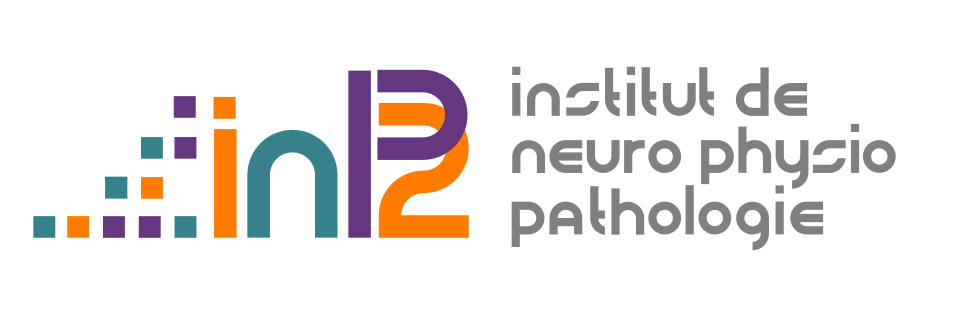Exploring Astrocytic Modulations in Brain Health and Disease
Astrocytes are vital cellular components of the brain, playing a key role in maintaining neuronal function and overall brain health. However, certain molecular changes in astrocytes could contribute to the onset and progression of neurodegenerative disorders. One of our research axes focuses on understanding those changes, using cutting-edge human-induced pluripotent stem cell (hiPSC) models (2D astrocytes, 2D neuron-astrocyte co-cultures, 3D brain organoids/assembloids and brain on-a-chip models) to explore how modulating specific molecular targets within astrocytes affects their function and their interactions with neurons.
One of our recent breakthroughs was the identification of TAGLN3 as a novel astrocytic protein of interest in Alzheimer’s disease (Arnaud et al., Cell Reports, 2022). Despite its potential significance, TAGLN3’s role in the brain remains largely unexplored, making it a primary focus of our studies. Alongside TAGLN3, we are investigating other candidate molecules, particularly those associated with astrocytic reactivity, which may hold critical insights into brain health and disease.
To achieve these goals, we employ advanced hiPSC-derived brain cell models and cutting-edge target modulation techniques, including CRISPR-Cas systems, virus-based delivery, antisense oligonucleotides (ASOs), and drug treatments. Our comprehensive approach combines cellular, molecular, and functional analyses to decode the complex biology of astrocytes. Through this work, we aim to identify new biomarkers or therapeutic targets for brain diseases.
This research axis is carried out in collaboration with a network of experts who contribute complementary techniques, including proteomics and in vivo gene therapy. Together, we aim to uncover new pathways for therapeutic development and deepen our understanding of the astrocytic contributions to brain health and neurodegeneration.
The Nivet lab is also collaborating with the Moyon lab within our institute (https://inp-dev.univ-amu.fr/fr/equipes/vieillissement-et-pathologies-du-lignage-oligodendroglial) with the aim to develop similar approaches in hiPSC-derived oligodendrocytes, another brain cell type that may play a key role in brain aging and age-related brain disorders.
Bridging Astrocyte Alterations, Inflammation, and Age-Related Neurodegeneration
One of our research axes aims at uncovering how inflammation - a hallmark of most age-related risk factors - induces changes in astrocytes and contributes to brain aging and neurodegenerative diseases. Using cutting-edge human-induced pluripotent stem cell (hiPSC) models, we explore the molecular mechanisms driving these changes to identify key regulators of brain aging.
Our lab focuses on characterizing the dynamic genomic landscape of astrocytes under the influence of inflammatory stimuli and genetic risk factors, such as APOE4 for Alzheimer's disease that is predominantly expressed in astrocytes. To achieve this, we harness advanced RNA sequencing techniques, molecular biology tools and innovative models, including hiPSC-derived astrocytes, cerebral organoids, and brain-on-a-chip systems.
Our ultimate goal is to translate these findings into meaningful outcomes. By identifying molecular markers of biological aging in astrocytes, we aim to:
- Develop measures of biological age linked to heightened risk for age-related brain diseases.
- Provide novel insights into early mechanisms of neurodegeneration.
- Inform on individual susceptibility to brain diseases.
- Reveal potential targets for therapeutic development.
This research holds the promise of advancing our understanding of brain aging and enabling early intervention strategies to combat neurodegenerative disorders.
Exploring APOE4-Driven Changes in Astrocytes
APOE4 is the most significant genetic risk factor for Alzheimer’s disease, and astrocytes are the primary producers of APOE in the brain. Our research focuses on understanding how APOE4 influences the biology of human astrocytes, a critical step in uncovering its role in Alzheimer’s disease.
To achieve this, we study human-induced pluripotent stem cell (hiPSC)-derived astrocytes carrying different APOE polymorphisms. Using these models, one of our recent key findings was the identification of TAGLN3 as a novel astrocytic protein potentially implicated in Alzheimer’s disease (Arnaud et al., Cell Reports, 2022).
Building on this foundation, we are investigating APOE4-associated modifications in astrocytes, including those related to proteolysis, lipid metabolism, and mitochondrial biology. These studies aim to uncover the molecular mechanisms by which APOE4 contributes to astrocytic dysfunction and its broader implications for brain health and neurodegenerative diseases.
A Collaborative Network of Projects
The Nivet Lab develops advanced tools and models that serve as a foundation for numerous research collaborations within our institute and outside (not described on this webpage). These partnerships span various fields of neurobiology, such as neuro-oncology and neuroimmunology, where our expertise contributes complementary solutions to research projects requiring the use of hiPSC-derived cells and associated models.
We are committed to fostering collaboration and are always open to exploring new partnership opportunities that align with our expertise and capacities. Through these collaborations, we aim to drive innovation and support groundbreaking advancements in neuroscience research.







